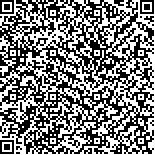| 摘要: |
| 多尺度的城市健康囊括了身体生理、精
神与社会等多方面的健康状态,涉及规划、医
学、卫生、建筑、心理等多学科领域。其中,居民
活动与人口健康状况、生活行为方式、环境健
康风险暴露等多种城市健康因素息息相关。基
于居民活动的城市健康研究从以人为本的角度
提供了重要的理论指导与科学依据,并呈现出多
尺度、多源数据融合的特点。随着全球的城市智
慧化建设,多尺度健康数据资源的丰富为基于多
学科的健康研究与城市规划治理提供了新的研
究方法与应用场景。本文从居民活动的视角出
发,梳理了地点、社区与城市三个尺度下已有的
城市健康数据融合计算研究,并对数据资源、
监测技术、研究方法与应用场景进行了整理。面
对当前城市健康研究中普遍存在的忽视人本尺
度、缺乏数据融合等问题,本文进一步探讨了数
据驱动城市健康的途径。通过结合多种数字化
技术、融通多尺度分析方法、推广多主体实施参与,促进多源、多尺度数据在城市健康研究中的融合计算分析,以期指导未来的城市健康研究与
人居环境建设。 |
| 关键词: 城市健康 城市信息学 智慧人居 数据融合 |
| DOI:10.13791/j.cnki.hsfwest.20230202 |
| 分类号: |
| 基金项目:国家自然科学基金(72274101);科技部国家重点研
发计划(2022YFC3800603) |
|
| Integrated Multi-scale Urban Health Data Analytics Based on Residents’ Activities |
|
LAI Yuan,LI Jiatong
|
| Abstract: |
| The continuous development of urban technology presents an opportunity to enhance
the general competitiveness of cities and improve people’s quality of life by integrating cutting-
edge information technology and data-driven healthy city construction and governance. Big data
resources and intelligent application scenarios reflecting residents’ activities have enriched the
development trend, providing new data resources and technical support for scientific understanding,
observation, and comprehensive analysis of urban health from multiple scales. In this regard,
future planning, design, construction, operation, maintenance, and governance of healthy cities
require multi-scale urban health research from the perspective of residents’ activities. This includes
scientific understanding of complex mechanisms of multi-scale urban health with multi-source data
related to residents’ activities and providing scientific basis and quantitative analysis methods for
intelligent planning and governance of healthy cities. It also includes supporting the application of
urban information technology for the intervention of multi-scale health with a view to human health
and ensuring the effective development and rational utilization of urban data resources with a value-
oriented approach to human health.
This paper explains the concept of multi-scale urban health and its association with residents’
activities, introducing the connotation of urban multi-scale health, the association between residents’
activities and multi-scale health, and the emergence of related big data. As the concept of multi-scale
urban health continues to expand and improve, multi-disciplinary, multi-scale, multi-dimensional, and
multi-system urban factors play an increasingly important role in the construction of urban health.
Additionally, the promotion of smart city construction and technology application, as well as the use
of multi-scale urban health data based on residents’ activities in urban planning, has led to a deeper
analysis and research of the characteristics of residents’ activities on a multi-scale level. In this context,
it is necessary to analyze and study the factors affecting multi-scale urban health and residents’ activity
characteristics. The fusion calculation of urban health data is also necessary and important.
Therefore, based on the theoretical and data resources, this article further introduces the data
use, computational methods, research findings and application scenarios of multi-scale urban health
analysis at three spatial scales: location, community, and city. The main ways of data-driven urban
health in light of the development trend of urban information technology and the complex problems
facing future habitat construction are also outlined. Multi-scale health research presents different
research methods and focuses, involving various urban spatial data, residents’ activity data, and data
collection methods. At the location scale, multi-dimensional perception and data integration of local
space are realized based on sensor monitoring, geographic location services, and other methods. With
the support of community spatial units and social organizational forms, community health records
establishment, data crowdsourcing, and community participation can be carried out at this scale,
thereby analyzing community residents’ activities and spatial multifaceted factors from a relatively
micro perspective. At the urban scale, factors such as urban heat environment, air pollution, building
density, and social economy within and between cities are taken into consideration, and the mobilityof residents within and between cities provides important clues for urban health, especially in epidemic response research. Overall, the location scale
involves fewer factors and a smaller spatial range but has the strongest intervention; the urban scale allows for more extensive and comprehensive analysis
but has rather low intervention. Therefore, data calculation at these three scales is suitable for different health research and scenarios, and when conducting
data fusion and calculation analysis, their targeted problems and suitable ranges should be identified.
Facing the problems of neglecting the human scale and lack of data fusion in current urban health research, this paper further explores the pathways of
data-driven urban health. By combining multiple digital technologies, integrating multi-scale analysis methods, and promoting multi-subject implementation
participation, the fusion of multi-source and multi-scale data in urban health research and computational analysis is promoted to guide future urban health
research and human settlement construction.
The aim of this article is to provide guidance and suggestions for future urban multi-scale health enhancement and high quality development. Overall,
the data fusion analysis based on the concept of multi-scale urban health of residents’ activities is not only of great theoretical value to the science of habitat
environment but also of practical significance to guide the all-round and whole-cycle health development of intelligent and healthy urban habitat planning,
construction, and governance in China in the future. |
| Key words: Urban Health Urban Informatics Smart Human Habitat Data Integration |


